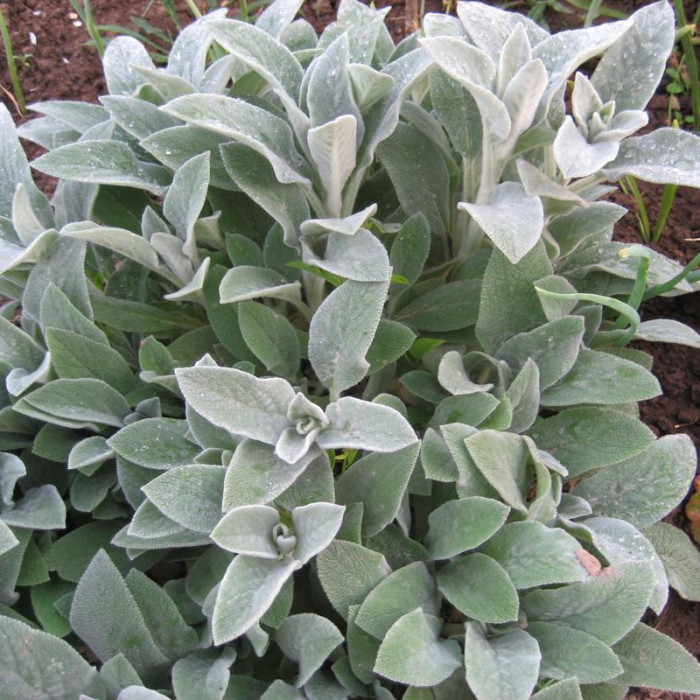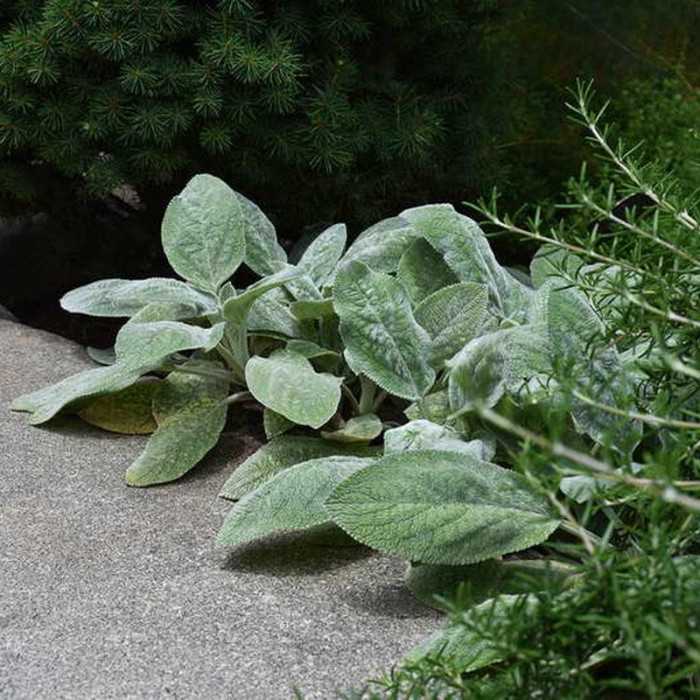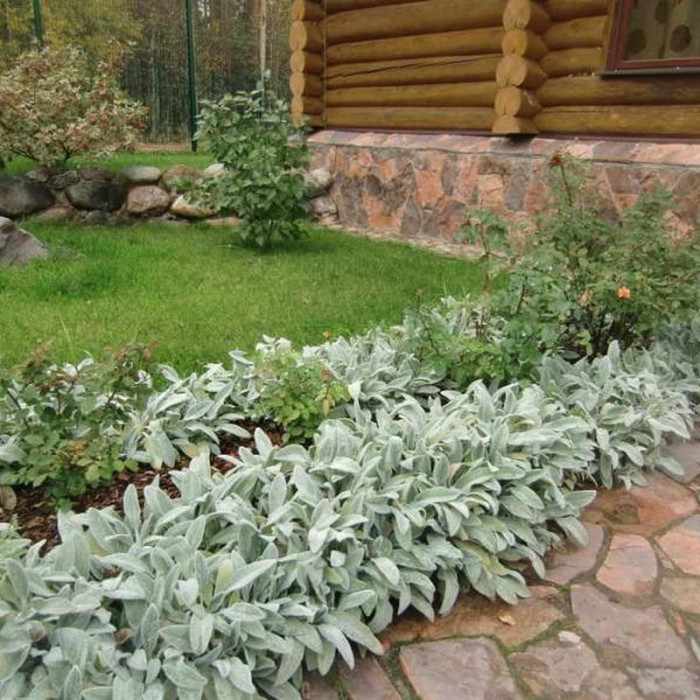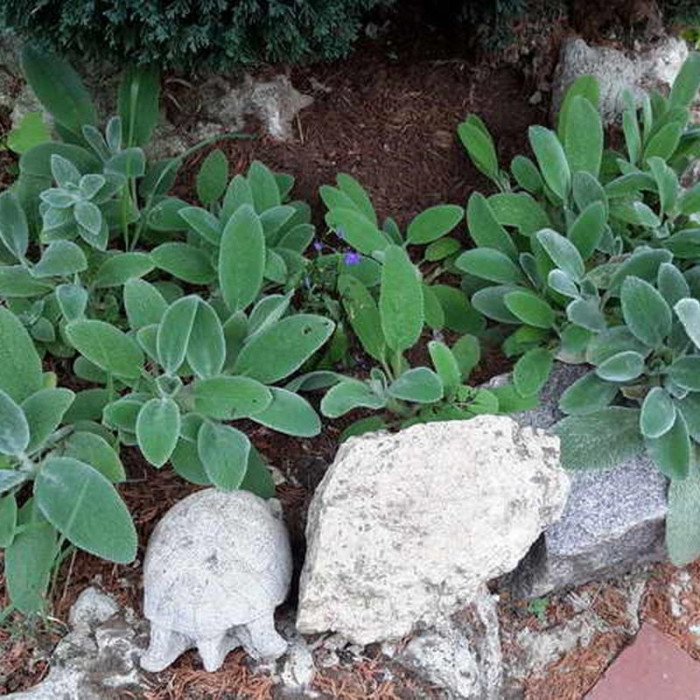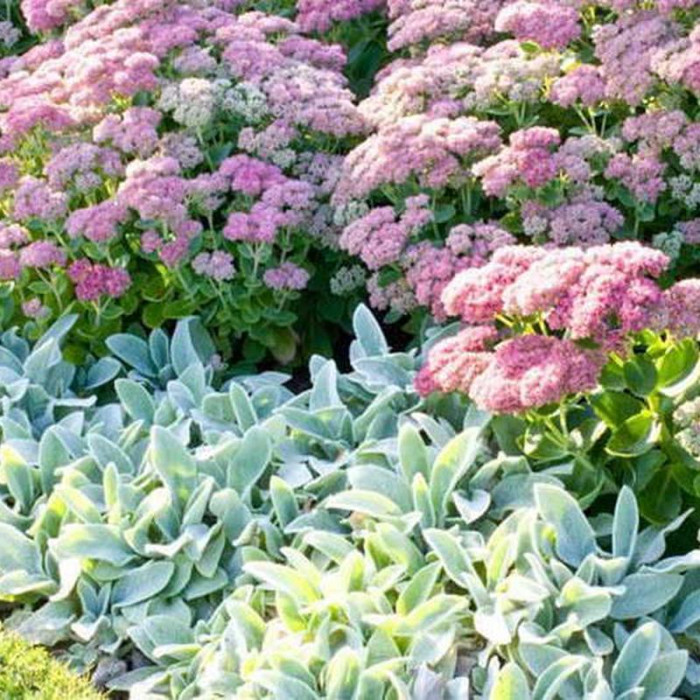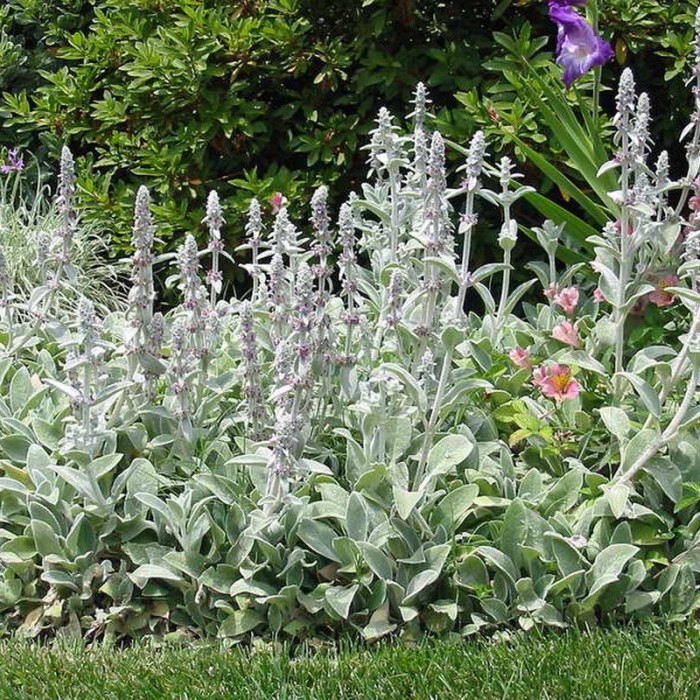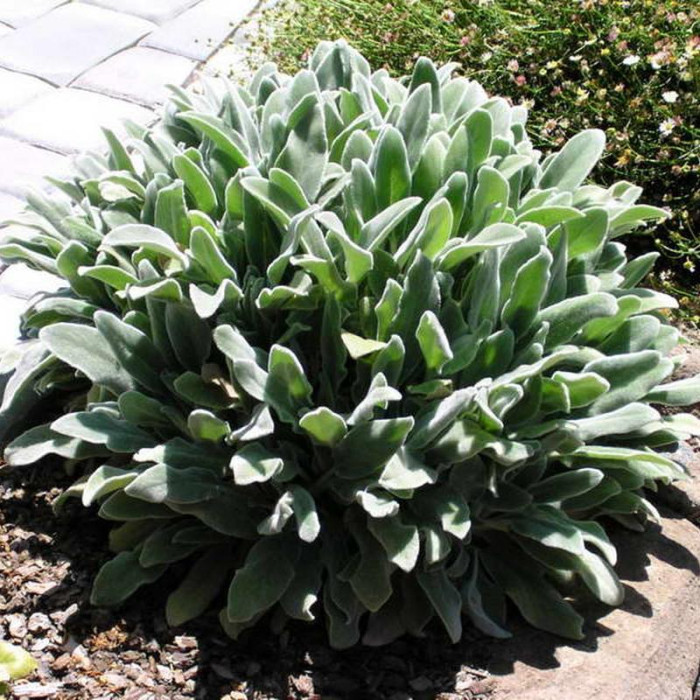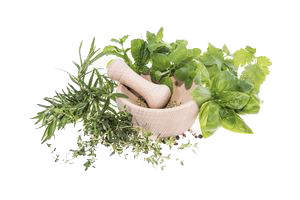Lamb's ear (, lamb's-ear) or woolly hedgenettle / Stachys byzantina - is a perennial herbaceous plant 20-60 cm high from the Lamiaceae family. The oblong leaves with felt pubescence, which you just want to stroke, sit disgustingly on the erect stems. Thanks to its interesting appearance, the popular name for stakhis is sheep's ears. The dark green shade of the leaves emphasizes the white-silver pubescence. Stems are erect and branching.
Stachys woolly blooms during May-August. Muds of pretty pink flowers form a spike-shaped inflorescence. Flower growers are very attracted to the leaves and in most cases the inflorescences are picked before they bloom. Already in the first year a lawn will form, and in the next season an almost continuous mat will appear.
In warm regions, they are sown immediately in open soil in spring or before winter. Just dig up the area, scatter the seeds and rake. If winters are harsh in your area, it is better to take care of growing seedlings.
The seeds germinate quickly (from 5 to 10 days) and without problems, and the seedlings are tolerant of transplantation; they can even “roam” around the site several times a season.
- Pour the sand-peat mixture into a wide container, spread the seeds over the top, sprinkle with a thin layer of sand and spray with a fine sprayer.
- You can germinate without shelter, just try to spray the soil every day, the lighting should be diffused, and maintain the temperature within 20-25 °C.
- If necessary, cut through a dense staircase; before transplanting into open ground, seedlings can be grown in the same container.
- Dig holes according to the size of the root system, transfer the seedlings along with the earthen ball, and when planting, maintain a gap of about 15 cm.
Care
In cultivation, the plant requires practically no attention.
Stachys tolerates periodic drought well; waterlogging of the soil has a negative effect: the rhizome and stem rot. Focus on precipitation; let the top layer of soil dry out between waterings.
Feed with complex mineral fertilizers twice in the spring. It responds normally to organic matter: a solution of infusion of chicken manure or mullein mixed with nitrate.
Wintering
Under the snow cap, lambs ear chistina successfully tolerates frosts; in the event of a particularly harsh winter, sprinkle the plantings with leaves or cover them with spruce branches. By the way, the leaves do not fall, but the attractiveness is lost, so gardeners cut off the shoots in the fall so that in the spring they do not spoil the appearance of the flowerbed.
Diseases and pests
Pure lambs ear does not suffer from pests and diseases. Only in case of excessive watering can fungi develop, leading to rot. Heavily affected plants must be removed from the site, and the soil must be treated with a fungicide.

No questions about this product, be the first and ask your question.


